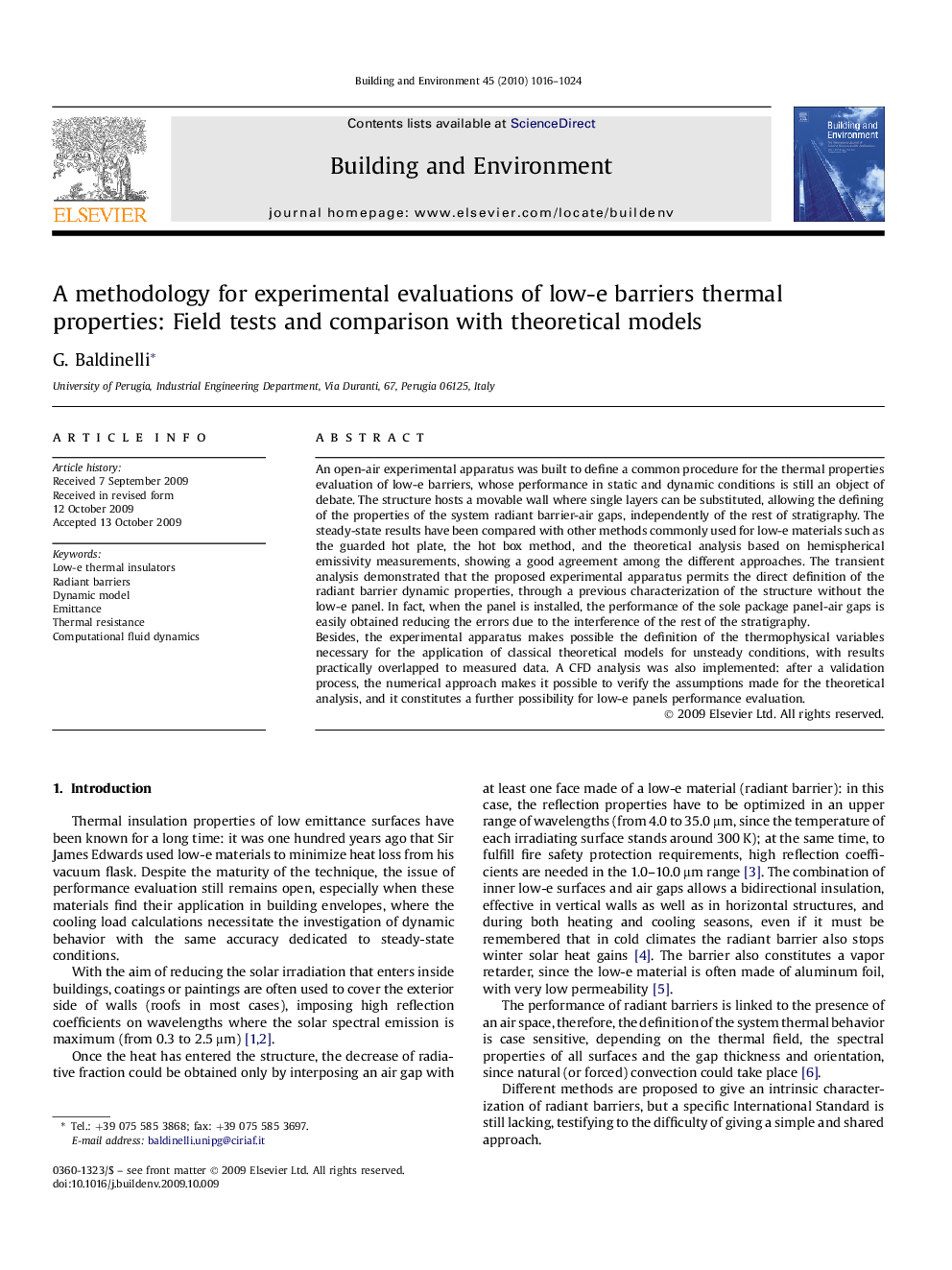| Article ID | Journal | Published Year | Pages | File Type |
|---|---|---|---|---|
| 249140 | Building and Environment | 2010 | 9 Pages |
An open-air experimental apparatus was built to define a common procedure for the thermal properties evaluation of low-e barriers, whose performance in static and dynamic conditions is still an object of debate. The structure hosts a movable wall where single layers can be substituted, allowing the defining of the properties of the system radiant barrier-air gaps, independently of the rest of stratigraphy. The steady-state results have been compared with other methods commonly used for low-e materials such as the guarded hot plate, the hot box method, and the theoretical analysis based on hemispherical emissivity measurements, showing a good agreement among the different approaches. The transient analysis demonstrated that the proposed experimental apparatus permits the direct definition of the radiant barrier dynamic properties, through a previous characterization of the structure without the low-e panel. In fact, when the panel is installed, the performance of the sole package panel-air gaps is easily obtained reducing the errors due to the interference of the rest of the stratigraphy.Besides, the experimental apparatus makes possible the definition of the thermophysical variables necessary for the application of classical theoretical models for unsteady conditions, with results practically overlapped to measured data. A CFD analysis was also implemented: after a validation process, the numerical approach makes it possible to verify the assumptions made for the theoretical analysis, and it constitutes a further possibility for low-e panels performance evaluation.
